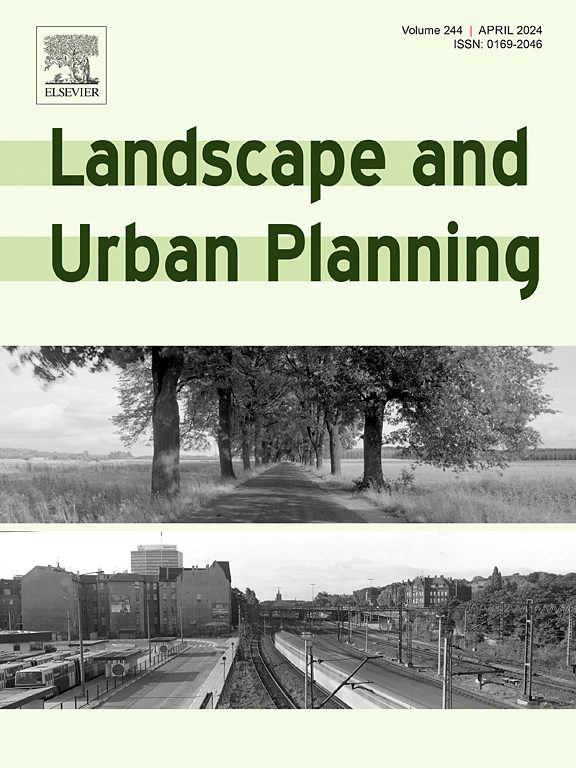Bird richness as a mediator between greenspace and mental health relationships
IF 7.9
1区 环境科学与生态学
Q1 ECOLOGY
引用次数: 0
Abstract
Neighborhood greenspaces are widely known to benefit bird diversity and human mental health. However, whether bird richness mediates the relationship between greenspace and mental health is unknown. We ascertain such mediation effects in 294 census tracts in Los Angeles City. We obtained greenspace data from one-meter resolution satellite imagery, bird species data from eBird citizen science datasets, and prevalence of poor mental health from the US Centers for Disease Control and Prevention. Mediation analysis combined with spatial error models was used to assess the mediating effects while controlling for geographic, demographic, and socio-economic factors. We found that the higher greenspace percentage was associated with increased bird richness (β = 0.188, p < 0.001), and such bird richness was associated with reduced prevalence of poor mental health (β = − 0.020, p = 0.010). The bird richness partially mediated the relationship between the greenspace percentage and the prevalence of poor mental health, as evidenced by a decrease in coefficient efficiency from − 0.020 to − 0.017. Our findings underscore the need for public health policymakers, landscape architects, and greenspace managers to consider biodiversity-friendly strategies in the design of urban greenspaces to enhance both wildlife habitats and human mental health.
鸟类丰富度在绿地与心理健康关系中的中介作用
众所周知,社区绿地有利于鸟类多样性和人类心理健康。然而,鸟类丰富度是否介导绿地与心理健康之间的关系尚不清楚。我们在洛杉矶的294个人口普查区确定了这种中介效应。我们从一米分辨率的卫星图像中获得了绿地数据,从eBird公民科学数据集中获得了鸟类物种数据,从美国疾病控制与预防中心获得了精神健康状况不佳的患病率。在控制地理、人口和社会经济因素的情况下,采用结合空间误差模型的中介分析来评估中介效应。研究发现,绿地比例越高,鸟类丰富度越高(β = 0.188, p <;0.001),而且这种鸟类丰富度与心理健康不良患病率降低相关(β = - 0.020, p = 0.010)。鸟类丰富度部分中介了绿地百分比与心理健康不良患病率之间的关系,效率系数从- 0.020下降到- 0.017。我们的研究结果强调了公共卫生政策制定者、景观设计师和绿地管理者在设计城市绿地时考虑生物多样性友好策略的必要性,以增强野生动物栖息地和人类心理健康。
本文章由计算机程序翻译,如有差异,请以英文原文为准。
求助全文
约1分钟内获得全文
求助全文
来源期刊

Landscape and Urban Planning
环境科学-生态学
CiteScore
15.20
自引率
6.60%
发文量
232
审稿时长
6 months
期刊介绍:
Landscape and Urban Planning is an international journal that aims to enhance our understanding of landscapes and promote sustainable solutions for landscape change. The journal focuses on landscapes as complex social-ecological systems that encompass various spatial and temporal dimensions. These landscapes possess aesthetic, natural, and cultural qualities that are valued by individuals in different ways, leading to actions that alter the landscape. With increasing urbanization and the need for ecological and cultural sensitivity at various scales, a multidisciplinary approach is necessary to comprehend and align social and ecological values for landscape sustainability. The journal believes that combining landscape science with planning and design can yield positive outcomes for both people and nature.
 求助内容:
求助内容: 应助结果提醒方式:
应助结果提醒方式:


